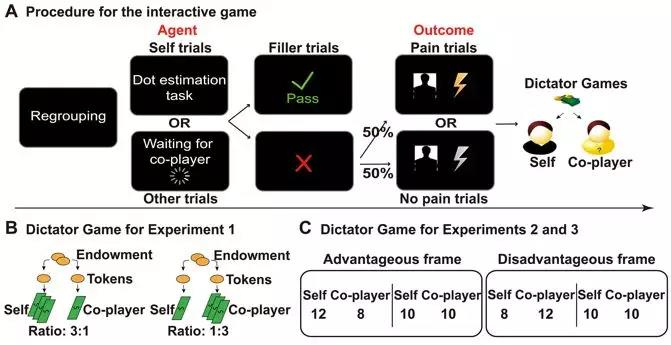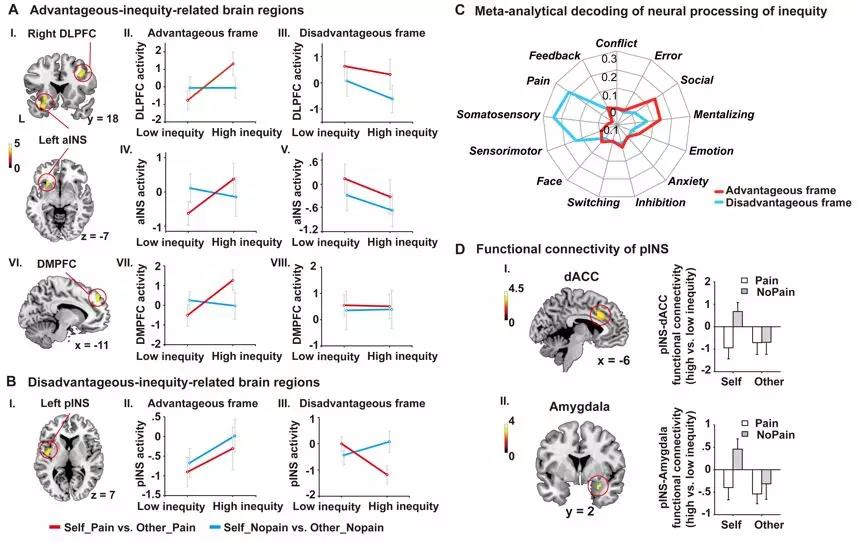Distinguishing neural correlates of context-dependent advantageous- and disadvantageous-inequity aversion
Prof. Xiaolin Zhou’s group at the School of Psychological and Cognitive Sciences and the PKU-IDG/McGovern Institute for Brain Research, Peking University published a paper on the Proceedings of the National Academy of Sciences (July 30, 2018) titled “Distinguishing neural correlates of context-dependent advantageous- and disadvantageous-inequity aversion”. This paper highlighted their latest findings on the neurocognitive mechanisms of context-dependent advantageous and disadvantageous inequity aversion. PhD student Xiaoxue Gao and former PhD student Hongbo Yu (now a post-doc at Yale University) are the co-first authors of this paper. Former PhD student Philip R. Blue also contributed to this work. This work was conducted in collaboration with Dr. Lusha Zhu’s group at the PKU-IDG/McGovern Institute for Brain Research, Peking University, and Prof. Ming Hsu’s group at Helen Wills Neuroscience Institute, University of California.
Inequity aversion, or the preference for fairness, is an other-regarding preference widely observed in human society. Individuals can be averse to inequity both when they receive more (i.e., advantageous inequity) and when they receive less (i.e., disadvantageous inequity) than others. The distinction between these two types of inequity aversion has been demonstrated in different disciplines, which provides a theoretical motivation for investigating potentially differential neurocognitive mechanisms underpinning the two types of inequity aversion. However, despite extensive research on disadvantageous inequity, little is known about advantageous inequity and whether these two types of inequity involve differential psychological and neural mechanisms.
Previous studies have demonstrated that individuals can integrate social context-related information into decision-making processes to adjust their responses to inequity, i.e. the context-dependency of inequity aversion. Here, Prof. Xiaolin Zhou’s group used fMRI to address the question from the perspective of context-dependency whether these advantageous and disadvantageous inequity involve differential neurocognitive mechanisms. To this end, the current study combined an interactive game that modulates social contexts (e.g., interpersonal guilt; cf. Yu et al., 2014) with computational models that enable us to characterize individual weights on inequity aversion (Saez et al., 2015). In each round, the participant played a dot-estimation task with an anonymous co-player (i.e., a confederate) who would receive pain stimulation with 50% probability when either the co-player or the participant him/herself responded incorrectly (Fig. 1A). At the end of each round, the participant acted as the dictator and completed a continuous version (Fig. 1B) or a binary choice version (Fig. 1C) of Dictator Game (DG), which determined the payoffs for him/herself and the co-player.

Figure 1. Task display. (A) Social interactive game. (B) Continuous version of Dictator Game. (C) Binary choice version of Dictator Game.
Computational modeling demonstrated the context-dependency of inequity-aversion (Fig. 2): when causing pain to the co-player (i.e., guilt context), participants became less tolerant of the advantageous inequity and more tolerant of the disadvantageous inequity during DG, compared with other conditions.

Figure 2. Behavioral results. (A) Participants felt guiltier when they themselves inflicted the pain upon the co-players (Self_Pain) than other 3 conditions, demonstrating the robustness and validity of our paradigm to induce guilt. (B-D) Group-level model-based results for participants’ choices during DG. When causing pain to the co-player (i.e., guilt context), participants’ advantageous inequity aversion (parameter α) increased and disadvantageous inequity aversion (parameter β) decreased during DG, compared with other conditions.
Consistently, neuroimaging results suggested that the two types of inequity are associated with differential neurocognitive substrates (Fig. 3). While the context-dependent processing of advantageous inequity was associated with the social- and mentalizing-related processes, involving left anterior insula, right dorsolateral prefrontal cortex and dorsomedial prefrontal cortex, the context-dependent processing of disadvantageous inequity was primarily associated with emotion- and conflict-related processes, involving left posterior insula, right amygdala and dorsal anterior cingulate cortex.

Figure 3. (A) Neural correlates of context-dependent advantageous and disadvantageous inequity processing. (B) Meta-analytical decoding of neural processing of inequity. (C) Functional connectivity of pINS in the disadvantageous frame.
These results provided valuable clues for understanding various social and economic phenomena, such as the asymmetrical response to inequity when individuals are in advantageous versus disadvantageous status in financial crises.
This work was supported by National Natural Science Foundation of China (31630034) and by National Basic Research Program of China (973 Program: 2015CB856400). Dr. Hongbo Yu was supported by a Newton International Fellowship from the British Academy (NF160700). The behavioral part of this study has been presented as a poster at the annual meeting of the Social and Affective Neuroscience Society 2016 (Poster award). The whole study has been presented in a talk at the Society for Neuroeconomics Annual Conference 2017.
Gao, X. *, Yu, H. *, Sáez, I., Blue, P. R., Zhu, L., Hsu, M., & Zhou, X. (2018). Distinguishing neural correlates of context-dependent advantageous- and disadvantageous-inequity aversion. Proceedings of the National Academy of Sciences. https://doi.org/10.1073/pnas.1802523115 (* equal contribution)
Link: http://www.pnas.org/content/early/2018/07/27/1802523115